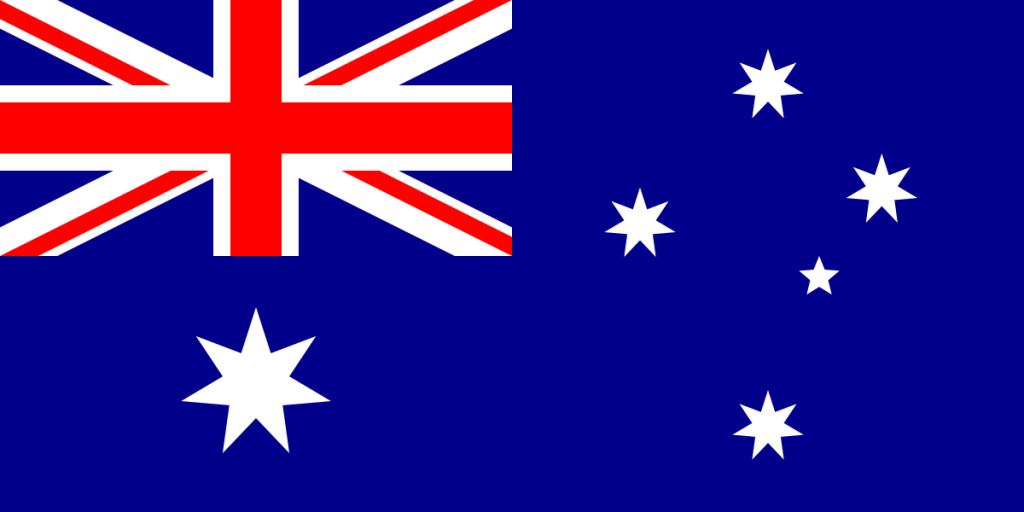Exporting to Australia


Australia Country Profile
Official Name (Local Language) Commonwealth of Australia
Capital Canberra
Population 22,992,654
Currency Australian Dollar
GDP $1,257 billion
Languages English
Telephone Dial In 61
Australia Imports Profile
Imports ($m USD) 228,442
Number of Import Products 4,362
Number of Import Partners 219

Australia Economic Statistics
| Government Website | https://australia.gov.au/ |
| Sovereign Ratings | https://countryeconomy.com/ratings/australia |
| Central Bank | Reserve Bank of Australia |
| Currency USD Exchange Rate | 1.352 |
| Unemployment Rate | 5.8% |
| Population below poverty line | NA |
| Inflation Rate | 1.4% |
| Prime Lending Rate | 3% |
| GDP | $1,257 billion |
| GDP Pro Capita (PPP) | $48,800 |
| Currency Name | Australian Dollar |
| Currency Code | AUD |
| World Bank Classification | High Income |
| Competitive Industrial Performance | 22/138 |
| Corruption Perceptions Index | 13/180 |
| Ease of Doing Business | 18/190 |
| Enabling Trade Index | 26/136 |
Access trade, receivables and supply chain finance
We assist companies to access trade and receivables finance through our relationships with 270+ banks, funds and alternative finance houses.
Get StartedExporting to Australia
Australia is the fifth largest economy in the Asia-Pacific region and the twelfth largest economy in the world. At current exchange rates Australians are among the wealthiest in the world per capita and the country has entered into a number of free trade agreements which establish close ties to countries around the world.
Australia imports around $225 billion per year of which about 40% is made up of machinery and transport equipment including cars, electrical machinery and telecommunications equipment. Other imports include manufactured goods, petroleum and food. Major import partners include China (23%), the United States (11%) and Japan (7%).
Exporting to Australia: What is trade finance?
Export finance is a revolving facility which some banks and specialist lenders offer – it enables businesses to purchase stock and can help ease the pressure from working capital problems.
Often, a trade finance bank will fund most of the cost of the receivables, including charges (e.g. shipping costs).
Trade finance offers benefits over more traditional bank finance like bridging mortgages or business loans. Trade finance provides quick funding without affecting existing relationships with banks.
How does it work?
If you’re a firm importing or exporting products outside of your own country, then a trade finance facility would assist your company to fund this through offering a letter of credit (LC) or some form of cash advance.
I’m looking to export to Australia, how can Trade Finance Global help, and how does it work?
If you’re looking to export products to other countries, you may require export finance, which is an agreement between you (the exporter), and the importer. A alternative finance bank will advance you the cost of producing the goods that you are exporting (as a debt instrument), either once you have sent the goods, or before producing them. Once your foreign importer has received the products and pays you for the import, you will repay the advance loan from the funder over an agreed period of time.
Chart Showing GDP Growth Compared to rest of world
GDP Composition for Australia
Agriculture
3.6%
Wheat, barley, sugarcane, fruits; cattle, sheep, poultry
Industry
28.2%
Mining, industrial and transportation equipment, food processing, chemicals, steel
Services
68.2%
Map
Top 5 Imports Partners
| Country | Trade | % Partner Share |
| China | 49,971 | 21.87 |
| United States | 23,613 | 10.34 |
| Japan | 16,511 | 7.23 |
| Korea, Rep. | 15,899 | 6.96 |
| Unspecified | 15,085 | 6.60 |
Top 5 Imports Products
| Export Product | Number |
| Petroleum oils, etc, (excl. crude); preparation | 7.9% |
| Automobiles with reciprocating piston engine di | 6.6% |
| Petroleum oils and oils obtained from bituminou | 3.5% |
| Transmission apparatus, for radioteleph incorpo | 3.3% |
| Floating or submersible drilling or production | 3.2% |
Local Authors
Local Partners
- All Topics
- Australia Trade Resources
- Export Finance & ECA Topics
- Local Conferences























